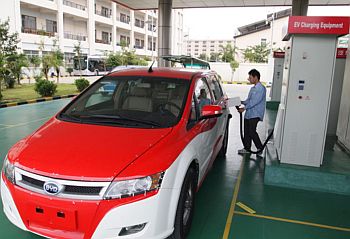|
|
 |
|
The New York Times
Under a major proposal prepared for Gov. Andrew M. Cuomo, driving a car into the busiest parts of Manhattan could cost $11.52, trucks would pay $25.34, and taxis and for-hire vehicles could see surcharges of $2 to $5 per ride.
Uber and ride-hail cars jam streets in Midtown and Lower Manhattan, while truck deliveries and rampant construction routinely block traffic that now crawls at an average of 4.7 miles per hour, down from 6.5 miles per hour five years ago.
“New York City traffic congestion now ranks second worst among cities in the United States and third worst among cities in the world,” a draft of the report says. If not abated, the congestion will cost the economy of the metropolitan area $100 billion over the next five years, the task force estimated.
Read the article at The New York Times.
|
Bloomberg
There’s a good chance that in eight years, Detroit’s automakers will not be producing sedans in favor of the more lucrative crossovers and SUVs
Mid-size sedans like the Chevrolet Malibu and Ford Fusion have gotten bigger, making the Taurus or Chevy Impala less necessary. A consumer who needs more space will just buy an SUV.
“You can call 2018 the death of the car,” said Mark Wakefield, head of the auto practice at consultant AlixPartners. “Just look at all the new model launches in crossovers and the dearth of launches in cars. You can see where people are putting their money.”
Read the article at Bloomberg.
|
The Guardian
Inventor Hugo Spowers has a dream: to replace today’s cars with his own hydrogen prototype.
Fuel cells work by electrochemically combining hydrogen, stored in a pressurized tank, with air to generate an electric current; the only emission is water vapor. Development of fuel cell technology has been slow. They are expensive to produce (platinum is a key component), as is hydrogen.
In 2016, Spowers unveiled his first production-ready car: the Rasa, a radical, ultra-light two-seater powered by a hydrogen fuel cell. Spowers hopes to have the car on the market in 2019. “As far as we can tell,” he says, “we are the only independent hydrogen car startup in the world.”
Read the article at The Guardian.
|
The Verge
After a visit to the Detroit Auto Show, the newest in-car technology shows that automakers have fallen behind with features already available in the iPhone X.
While many drivers wish their infotainment systems worked like their phones, the biggest deterrent to making your car too much like your phone is that you may look at it more than you’re supposed to (when your eyes should be on the road).
“It’s great with the digital stuff with the hype and everything, but we forget we are analog people that want to look at and touch something. We must not forget the real world for the virtual world,” said Mercedes-Benz design chief Gordon Wagner.
Read the article at The Verge.
|
|
|
|
|

Wired
As self-driving cars become more of a reality, automakers are teaming up with new sorts of companies, many of them startups, to tell the world that they are “with it” and hip to the autonomous technology.
It’s a critical opportunity for the younger, smaller companies, as the public’s perception of cars changes. They need your trust to keep your family safe in a self-driving car.
“With all the new technologies merging, you have to have partners, because you can’t be expert in everything,” Henrik Fisker says.
Read the article at Wired.
|
|

By Mark Boada, Senior Editor
By all accounts, when it comes to the world’s electric vehicle (EV) present and future, China is the 800-pound gorilla. Consider the following, as reported in This Week in Asia last August:
- In 2015, Beijing declared its plans to dominate the world’s electric car industry by the year 2025.
- In 2016, China sold half a million electric vehicles, making it by far the world’s biggest market. In contrast, manufacturers in the world’s second largest market, the United States, sold just 155,000.
- China’s electric vehicles are manufactured overwhelmingly by locally owned producers, not foreign joint ventures, and they are based on Chinese technologies. Last year China’s leading electric vehicle maker, Shenzhen-based BYD, turned out 100,000 cars. The leader in the US, Tesla, managed to sell 76,000 into its home market.
Elsewhere, you’ll find these facts:
READ MORE
|
|

The Detroit Bureau
A new government report recommends that all states significantly lower the level of alcohol in the blood from .08% to .05%, to be considered driving under the influence of alcohol.
The 489-report also calls for a number of other steps that could reduce alcohol consumption, including higher alcohol taxes and shorter hours for bars, restaurants and liquor stores.
“We know that impairment to drive a car actually starts far lower than 0.08. It starts at 0.02 or 0.03,” said Dr. Timothy Naimi, of the Boston Medical Center. “And there’s also good evidence to show that dropping from 0.08 to 0.05 saves lives.”
Read the article at The Detroit Bureau.
|
|
|
|

